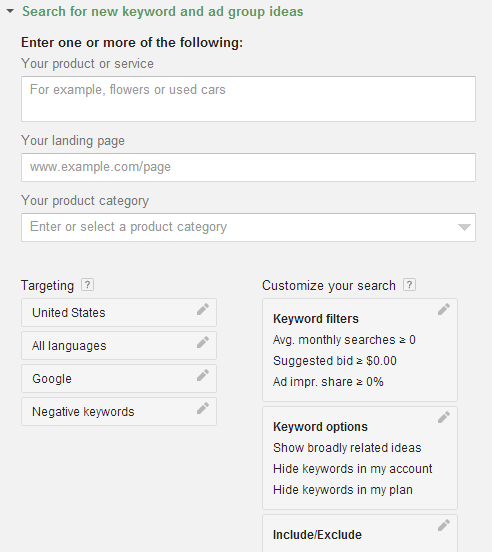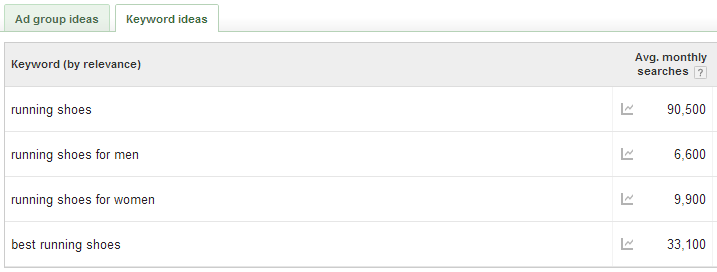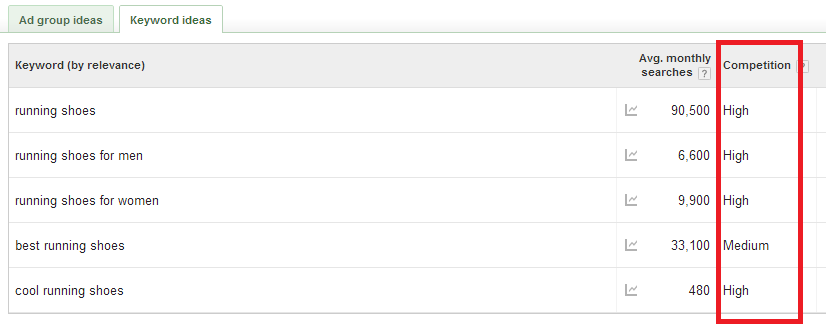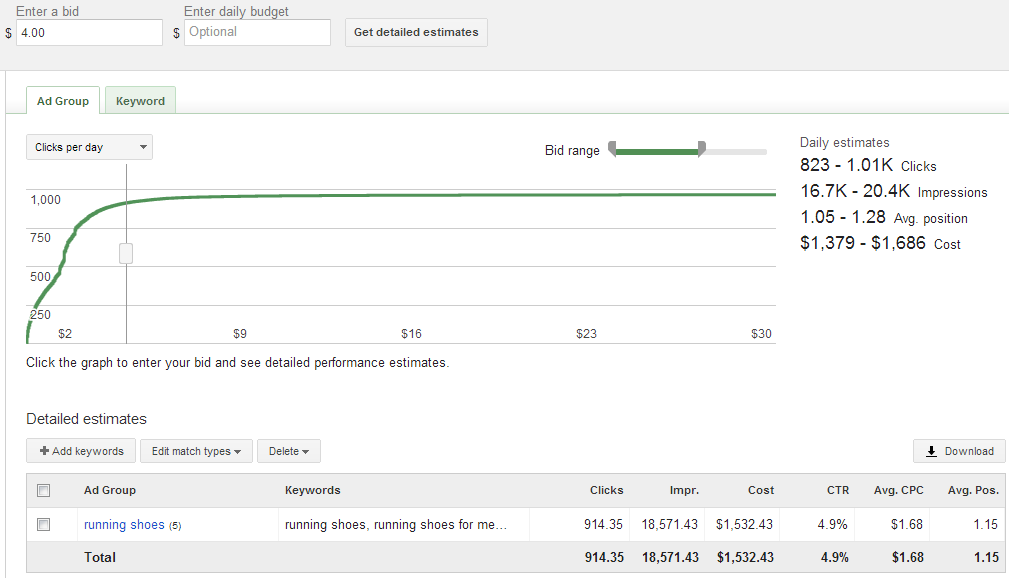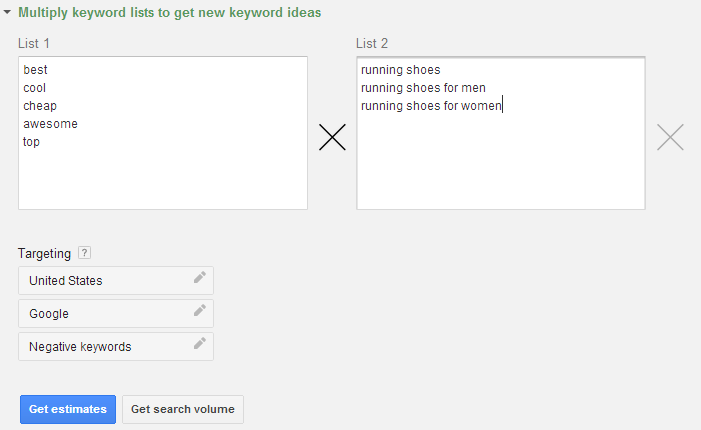AdWords is a tool Google offers advertisers to help them gain traffic and, ultimately, sales through pay per click advertising. While AdWords is relatively easy to use, there’s a good chance you’re not maximizing your return-on-investment (ROI) due to some simple, easily correctable mistakes.
Here are six common areas where advertisers tend to make AdWords faux pas and ways that they can be improved.
TOO MANY KEYWORDS IN AN AD GROUP
Using too many keywords in an ad group makes it more difficult to fit those keywords into your ad copy. Deftly incorporating keywords into ads so that the copy sounds natural is an art and a science. But if you include too many keywords, you won’t be able to properly customize the ad so that it matches the term being searched for.
For example, consider a retailer who sells a variety of shoes for athletic endeavors. If they create an “athletic shoes” ad group that includes keywords such as running shoes, tennis shoes and cross-trainers, it will likely result in a generic and vague ad, such as “Find assorted athletic shoes for men and women.” Consequently, when someone searches specifically for “running shoes,” they’ll be less inclined to click on the retailer’s ad because it’s doesn’t closely match-up with what they are looking for, which will lead to a drop in the retailer’s click-through rate.
Recommendation: Group your keywords together as tightly as possible in an ad group and select keywords that reflect what someone would actually search for. For example, the athletic shoes retailer would be better off creating an ad group for Running Shoes, Tennis Shoes, Cross-trainers, etc. Then, under the Running Shoes ad group, they might include the keywords “shoes for running,” “quality running shoes,” “trail running shoes,” “road running shoes,” etc. To keep it simple, a general rule is to include no more than 15 keywords per ad group.
When it comes to selecting what keywords to include in your ad group, it’s best to mix common sense with Google’s
AdWords Keyword Planner.
By breaking up your ads and keywords into themes, the easier your campaigns will be to monitor and optimize and the more likely a consumer will be to click on your ad.
NOT USING NEGATIVE KEYWORDS
In many cases, advertisers either don’t know to use negative keywords, or they are not adding or updating them consistently. Negative keywords might include locations where your services are not provided, terms that would reflect poorly on your brand, or related products that you don’t sell or don’t want to sell.
For example, if you sell knitted scarves and mittens but you don’t sell leather gloves, you’d want to add “leather gloves” as a negative keyword so that you are not wasting clicks or spending money on clicks that don’t matter to your website.
Recommendation: In addition to including words that you don’t sell or don’t want to sell, it’s also a good idea to include terms that generate a lot of clicks, but not conversions. You can find that information by running a
Search Terms Report in Google.
You can also use negative keywords at different levels of your account. For instance, if you sell road and mountain bikes but you’re running a specific campaign to raise awareness for your mountain bikes, you might include “road bikes” in your negative keyword terms for that particular campaign.
NOT USING LANDING PAGES
Landing pages are super important for ensuring that you are directing people to the product/services that they are looking for. Sending someone to your home page to find a specific product will only serve to overwhelm and frustrate them – especially if you’ve listed numerous other products on your home page. If a potential customer has to take the time to hunt for what they are looking for, more often than not, they won’t.
Recommendation: Make life easy for visitors and create specific landing pages for each of your products. This way, when someone shops for a product that you offer, they’ll be taken directly to that product page on your site.
This not only creates a better user experience for your prospective customers, it will also increase your relevance for that product’s search term. Google will recognize that your landing page is providing the information that the searcher is looking for and will likely improve your quality score.
NOT USING AD EXTENSIONS
AdWords allows you to created ad types that aren’t necessarily part of a standard pay per click ad, which typically includes an ad headline, description, and display URL. These other ad types are known as “ad extensions” and include sitelink extensions, call-out extensions, and review extensions.
Sitelink extensions are additional ads that can go under your ad. Since they also include a headline and a product description, they are essentially an ad unto itself. The beauty of sitelink extensions is that they give you more ad space to promote more of your products—all without extra cost. You only pay for the click, not to post all the different elements of the ad.
In addition to sitelink extensions, two other valuable ad extensions are:
Callout extensions – Google recommends that advertisers use callout extensions to draw attention to unique selling points and important product details and benefits. For example, “100% made in the USA. Free shipping. Free returns. 24/7 customer service.”
Google will rotate call-out extensions and sitelink extension based on viewers search history.
Review extensions – Review extensions are reviews of your product from a legitimate third party. In other words, it can’t be from someone’s Facebook comment or a review on your website. Review extensions add authority and authenticity to your company, products and services. When a user clicks on the review extension link, it will take them to the review page, blog post, etc. What’s more is that when someone clicks on a review extension, you don’t have to pay for that click.
 Recommendation
Recommendation: Use ad extensions.
NOT BIDDING ON BRAND TERMS
Oftentimes advertisers don’t feel that they need to bid on the name of their company because it already ranks high in organic searches. While that may be, the reality is that someone else may bid on your brand term. If you’re not bidding on it and someone else does, their paid ad might show up above your organic listing results, leading a user to click on their ad instead of yours.
Recommendation: Bid on your brand terms because there are many advantages of doing so. First and foremost, it is incredibly inexpensive for you to bid on your brand terms. And if your brand is well-recognized, you should easily and cost-effectively be able to get the number one ad position for all branded searches. So it won’t cost you much and it will drive a lot of traffic, which means higher ROI.
Another reason why it’s beneficial to bid on your branded terms is because it will give you two listings on a page: your paid ad and your organic search result. What’s more is that, compared to an organic search result, you have more control over the messaging that a searcher sees and the landing page they are sent to when you bid on branded terms. This translates into more control over the user experience and conversions.
The bottom line is that even the most recognized brands in the world pay for ads using their brand terms, so it’s just smart advertising to do so too.
NOT KNOWING WHAT YOUR GOALS ARE
In order to be clear on what you can spend on your AdWords ad campaign, you must be clear on your goals and the value of your products. For example, a retailer who spends $55 on keywords clicks to sell $50 shoes is not running a cost-effective AdWords campaign.
Recommendation: Look at the big picture and know what your ROI needs to be so that you can set an appropriate cost per acquisition. Ask yourself this question: Is your goal to make more sales or to lower the cost of your sales? Typically it can only feasibly be one or the other, which is why it’s critical to figure out whether volume or CPA is the goal. That will help determine your ad spend.
Being aware of these common Google AdWords pitfalls will make AdWords less expensive and more profitable over time. These tips are also exponential in the way in which they can help your AdWords campaign. If you can get more clicks and conversions, you’ll ultimately rank higher, which will help you continue to get more clicks and conversions.

